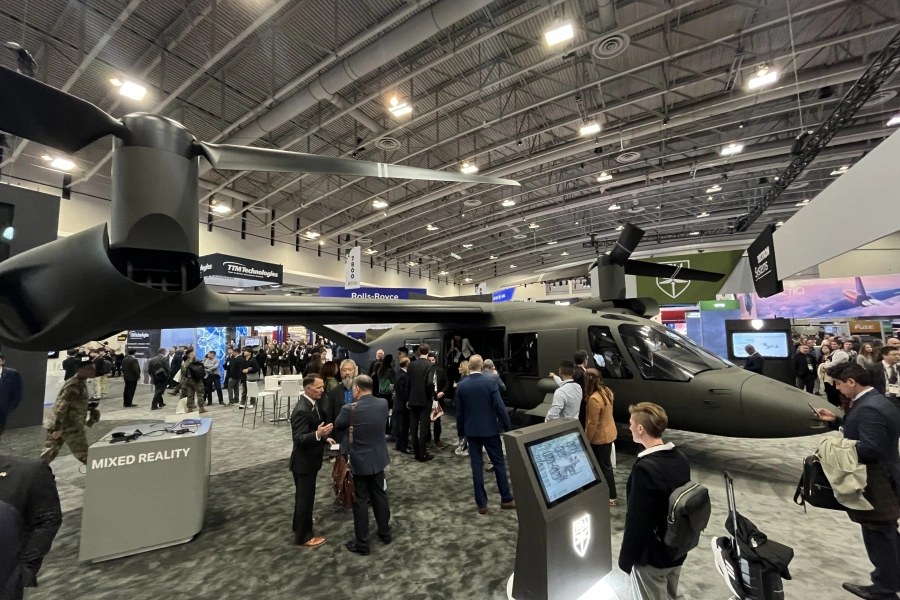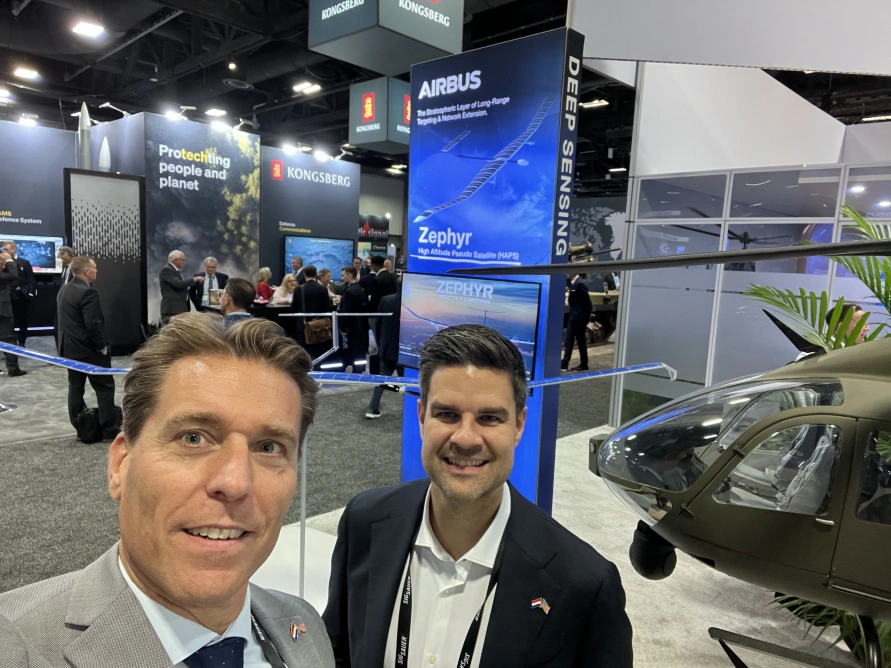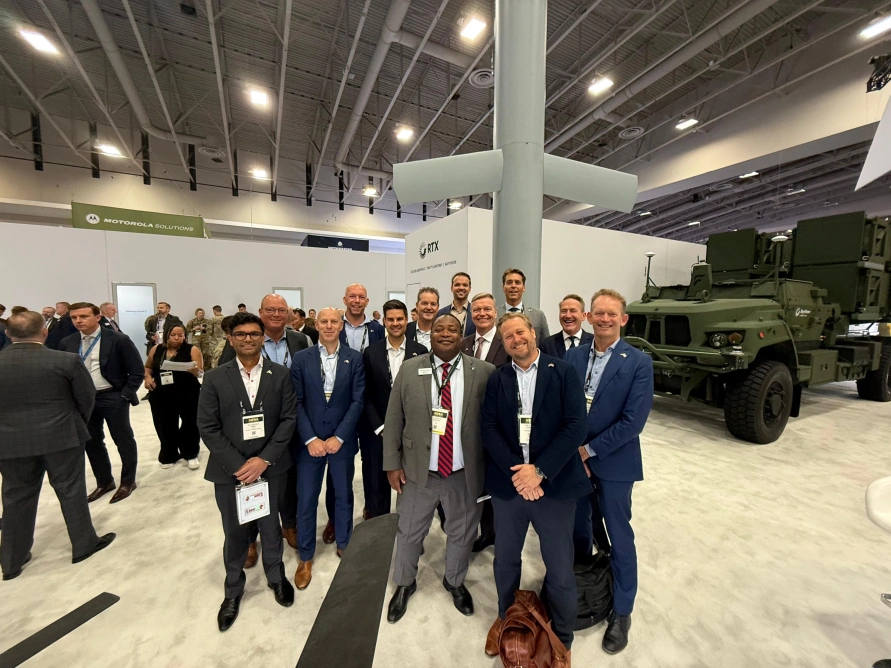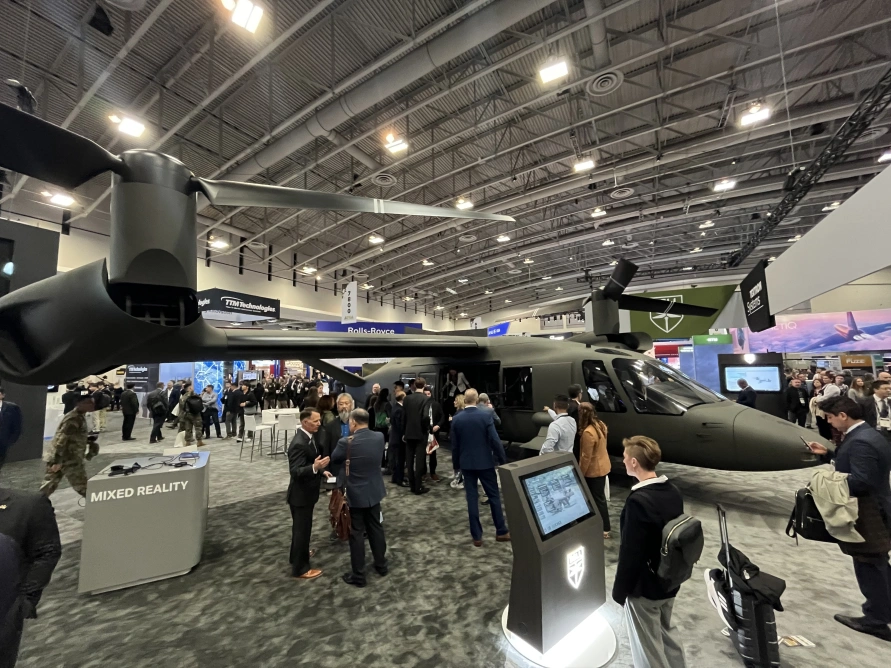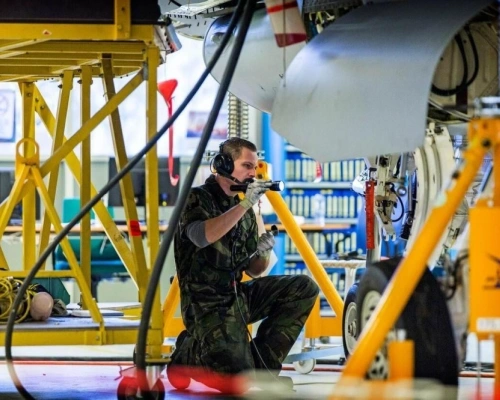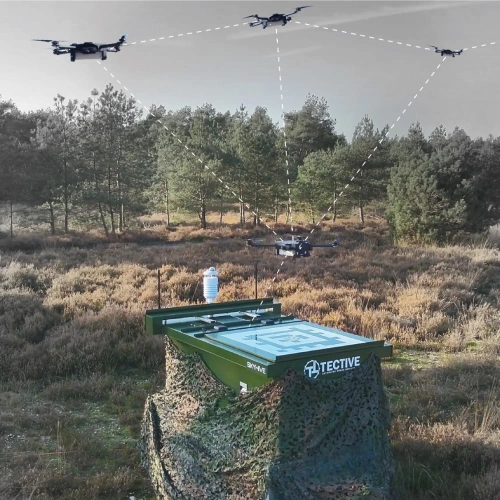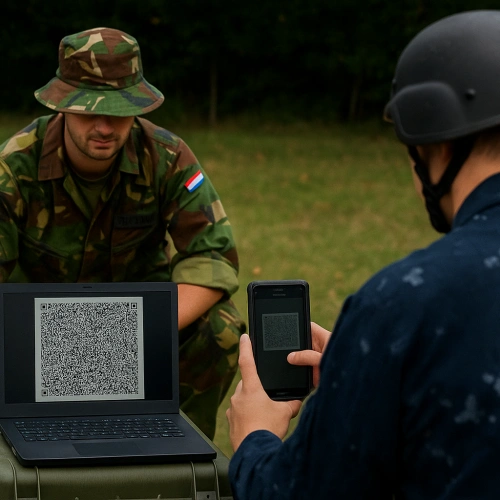With more than 700 exhibitors and tens of thousands of visitors from all over the world, the fair offered a unique opportunity for Dutch high-tech companies. The Brabant Development Agency (BOM) therefore organized an exploratory trade mission together with a number of partners.
This mission was led by Peter van de Griend, Project Manager International Trade, and Daan de Cloe, Managing Director Foreign Investments & International Trade. Their goal: to explore opportunities for collaboration between the Brabant high-tech industry and major American OEMs (original equipment manufacturers) from the defense sector.
Warfare is changing, this opens doors for Dutch innovation
The war in Ukraine has drastically changed the playing field. While the defense sector has always been centered around traditional and very expensive military equipment, the focus is now shifting towards autonomous systems, drones, anti-drone systems, sensor technology, and artificial intelligence.
“It is not efficient at all to shoot drones out of the sky with expensive F-35 aircraft, as happened recently. There is a need for faster, smarter, and cheaper solutions,” says De Cloe. “This is exactly where the strength of our Dutch high-tech sector lies.”
The United States remains a leader in traditional military systems but struggles with a lack of disruptive innovation. This presents opportunities for Dutch companies, who are world leaders in photonics, semicon (chips), and system integration.
“The Americans realize they need the innovative strength of Europe,” says Van de Griend. “They are used to long development cycles, but the new reality demands speed and flexibility. The Dutch high-tech sector can offer that.”
Learn more

Daan de Cloe

Industrial Participation Policy Brings Production to the Netherlands
An important instrument for cooperation is the so-called Industrial Participation (IP). This policy is aimed at improving the market position of Dutch producers in the defense market. When the Ministry of Defense orders military goods abroad, the government can request counter-orders. The foreign company is then obliged to place orders with companies in the Netherlands.
“American companies still have quite a few of those commitments on the shelf,” says De Cloe. “We can use these to realize new production lines and innovations in the Netherlands.”
A striking example is the collaboration between General Atomics and VDL, where drone production is partially moving to the Netherlands. De Cloe: “This strengthens our manufacturing industry and contributes to European strategic autonomy.” Van de Griend adds: “Production on Dutch soil strengthens our position as a partner of the United States and as a supplier within the European Union.”
Brabant knowledge strengthens European resilience
The mission delivered concrete results. A participant identified seven target companies and secured four follow-up meetings with American engineers. “Those kinds of meetings are precisely what we aim for with these trade missions,” said Van de Griend. “Long-term relationships between companies start this way.”
Alongside the exhibition, the NL-US Defense Industry Days also took place. De Cloe: “Those days were specifically aimed at facilitating strategic discussions to promote transatlantic cooperation.”
The Dutch defense industry has long been a valued partner for the Americans. Through the F-16 and F-35 programs, the Netherlands has established an excellent reputation in maintenance and supply chain management.
From reconnaissance mission to innovation mission
The trip to AUSA was intended as an initial exploration. But the results are so promising that BOM is aiming for a full innovation mission next year, focused on concrete collaboration and joint development projects. BOM is doing this in collaboration with strategic partners, such as the Dutch embassy, the NIDV, the Military Production Commission (CMP), and the Dutch high-tech sector.
“The next step is deepening,” says De Cloe. “We want to build ecosystems focused on specific domains such as drones, radar systems, optical communication, and cybersecurity. In these, companies, knowledge institutions, and OEMs can jointly develop new technology. This is good for the Netherlands and for our partners in the US.”
The world has changed
The mission confirms that the Americans see the Dutch high-tech industry as a reliable source of innovation. “The world has changed,” concludes De Cloe. “This requires new technology and new ways of thinking. The Netherlands can play a key role in this.”
